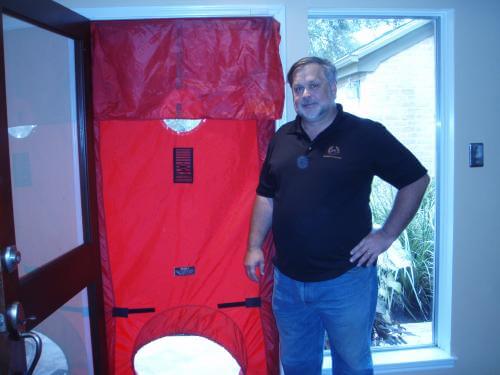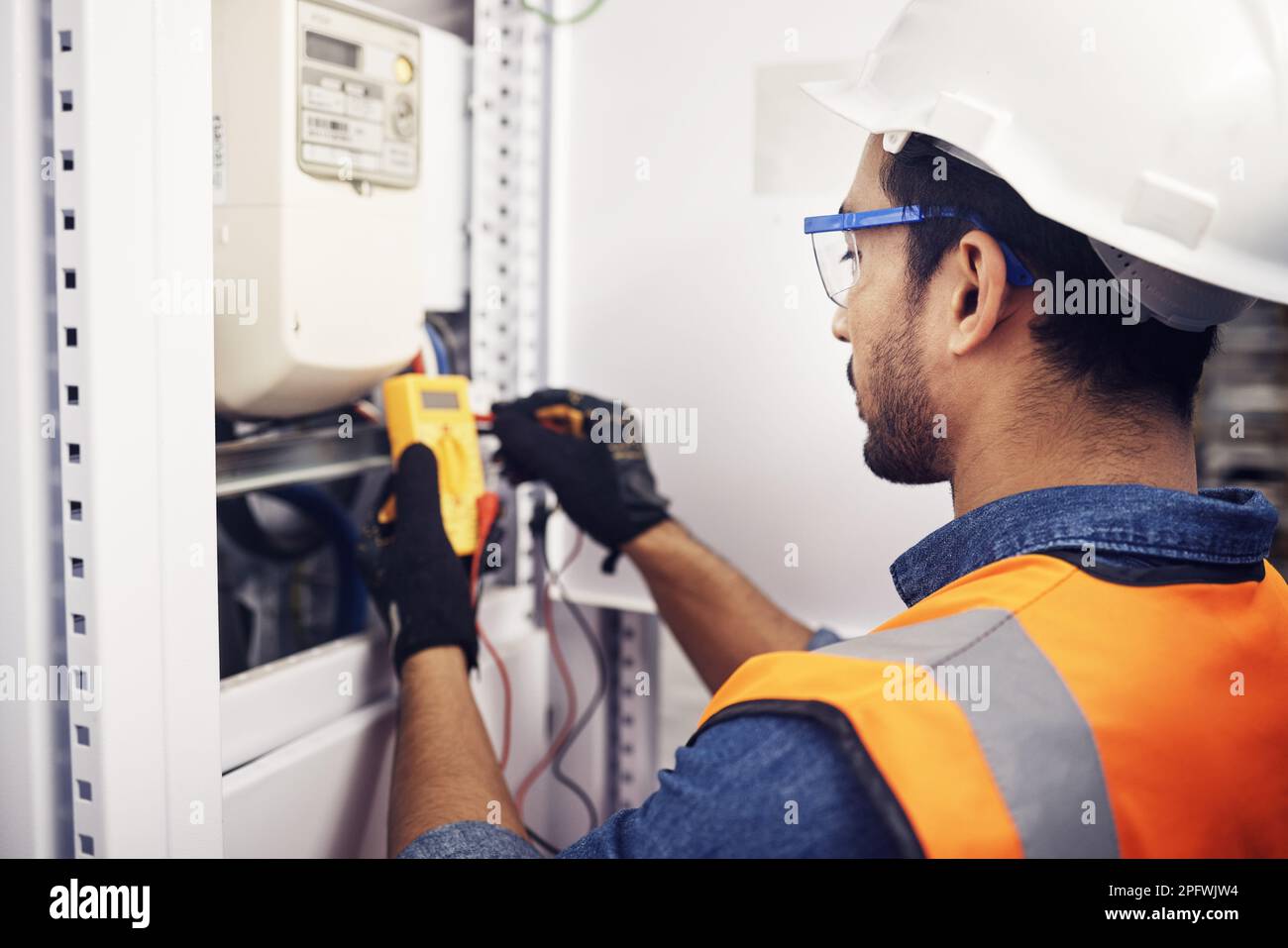What is a blower door test? Learn how energy testing north carolina measures your home's energy loss
What is a blower door test? Learn how energy testing north carolina measures your home's energy loss
Blog Article
Just How Energy Testing Can Lead to A Lot More Sustainable Living Solutions
Power testing is an important device for advertising sustainable living. It discovers inefficiencies in energy usage within homes. Methods such as energy audits and thermal imaging offer important understandings. Property owners can recognize areas needing improvement, from insulation to appliances. Dealing with these ineffectiveness can bring about significant power savings. Many stay not aware of the full possibility of these practices. What steps can individuals require to enhance their homes and add to a much more lasting future?
Understanding Power Screening and Its Value
Usual Techniques of Power Screening
There are a number of common methods of power screening that homeowners can use to evaluate their energy effectiveness (energy testing). One extensively made use of method is the blower door examination, which determines the air leakage in a home. By pressurizing the structure, it determines drafty areas that may require sealing. One more method is thermal imaging, where infrared electronic cameras identify temperature variants in windows, wall surfaces, and ceilings, highlighting insulation issues.Energy audits are likewise prominent, including a complete evaluation of a home's power usage, usually conducted by an expert. These audits may consist of reviewing home heating and cooling down systems, appliances, and overall energy intake patterns. Additionally, clever power meters can supply real-time information on power use, aiding house owners recognize their consumption routines. Together, these methods give beneficial understandings, enabling homeowners to make informed decisions concerning boosting their power performance and promoting lasting living practices
Identifying Power Inefficiencies in Your Home
Identifying energy inadequacies in a home is crucial for homeowners intending to minimize energy usage and reduced utility bills. Typical areas to analyze consist of insulation, home windows, and appliances. Poor insulation can lead to substantial warmth loss in winter season and unwanted warm gain in summertime, making heating & cooling systems function harder. Drafty home windows add in a similar way, permitting conditioned air to leave and increasing energy demand.Additionally, out-of-date home appliances often consume extra energy than their contemporary equivalents, even more exacerbating ineffectiveness. Property owners ought to likewise take into consideration the lights system, as incandescent light bulbs utilize more power contrasted to LED options.Regular upkeep of cooling and heating systems is vital, as overlook can cause decreased efficiency. By systematically assessing these facets of a home, property owners can determine locations needing renovation. Addressing these inefficiencies not just improves comfort but additionally adds to an extra lasting way of life by lessening power waste.
The Function of Power Audits in Sustainability
Power audits play a necessary function in advertising sustainability by giving house owners with an extensive evaluation of their energy use. These examinations recognize locations where power is wasted, permitting people to comprehend their consumption patterns and make educated choices for renovation. By exposing ineffectiveness in home heating, air conditioning, insulation, and appliances, energy audits act as a vital tool for minimizing total power demand.Furthermore, they facilitate the execution of energy-saving procedures, such as upgrading insulation or setting up energy-efficient illumination, which can substantially reduce utility costs and lower carbon footprints. The understandings got from an energy audit encourage homeowners to prioritize sustainability in their living environments. As more households take part in this procedure, the collective impact adds to wider environmental objectives, promoting a society of energy awareness and responsibility. Inevitably, power audits are fundamental to advancing lasting living remedies, profiting both specific home owners and the atmosphere at big.
Cutting-edge Technologies for Power Efficiency
As homeowners significantly seek to improve their energy effectiveness, innovative modern technologies are emerging to sustain these endeavors. Smart home systems, equipped with sensors and automation, permit homeowners to keep track of and manage power consumption in real-time. These systems can readjust lighting, cooling, and home heating based upon occupancy, thereby minimizing waste.In addition, advancements in energy-efficient devices have made considerable strides. Devices such as power STAR-rated refrigerators and cleaning machines eat much less power while providing ideal efficiency. The integration of renewable power sources, like solar panels and wind turbines, allows property owners to create their own power, decreasing reliance on nonrenewable resources.Building products have also developed, with alternatives like shielded energy-efficient home windows and concrete forms adding to reduced power loss. With each other, these cutting-edge modern technologies not just boost power effectiveness yet likewise foster an even more lasting living atmosphere, equipping property owners to make impactful options in their power intake techniques.
Long-Term Advantages of Lasting Living
While several might view sustainable living as a pattern, its long-term advantages prolong far beyond plain lifestyle choices. Embracing sustainable methods results in substantial decreases in carbon impacts, adding to a healthier planet. By minimizing resource usage and focusing on renewable resource, people and areas can experience lower utility prices. This economic alleviation can boost financial stability over time, permitting reinvestment in other crucial areas.Furthermore, lasting living fosters more powerful area ties as people work together on neighborhood efforts, promoting social cohesion. Health advantages likewise arise, as minimized pollution and boosted environment-friendly rooms enhance air high quality and total health. Furthermore, future generations will inherit a more lasting setting, guaranteeing the availability of natural deposits and biodiversity. Ultimately, the long-term advantages of lasting living include environmental, economic, and social measurements, offering an engaging case for individuals to take on and maintain these practices for the greater good.
Actions to Apply Energy-Saving Solutions
Executing energy-saving solutions starts with a Click Here complete assessment of power intake patterns to identify locations for improvement. Once these patterns are comprehended, individuals can determine energy-efficient upgrades that align with their demands. Constant monitoring and changes to energy usage guarantee that these solutions stay effective in time.
Analyze Power Intake Patterns

Reviewing power consumption patterns is an important action toward determining efficient energy-saving options. By methodically tracking use throughout different times and companies, people and devices can identify areas of too much consumption. This evaluation can expose peak use durations, making it possible for a better understanding of when energy demands are highest. In addition, analyzing patterns enables contrasts in between similar home appliances, highlighting those that run less effectively. Information collection techniques, such as clever meters and energy audits, give beneficial understandings right into total energy use. Additionally, identifying fads gradually can help in acknowledging seasonal variants and changes in usage routines. This fundamental knowledge is vital for developing targeted strategies that promote sustainable living and lower general energy expenditure.
Identify Energy-Efficient Upgrades
To effectively implement energy-saving solutions, identifying energy-efficient upgrades is crucial for both homeowners and services. This process starts with a comprehensive analysis of existing systems, including HVAC systems, insulation, and appliances. Upgrades may incorporate installing ENERGY STAR-rated devices, enhancing insulation, and utilizing energy-efficient home windows. In addition, executing smart thermostats can enhance home heating and cooling down schedules, lowering power usage. Moving to LED lighting is an additional reliable measure, as it eats substantially less energy than conventional light bulbs. Checking out sustainable energy alternatives, such as solar panels, can supply long-lasting savings. Eventually, prioritizing these upgrades not just adds to lowered energy expenses but also cultivates Click This Link a commitment to sustainability, benefiting both the atmosphere and future generations.
Monitor and Change Usage
Surveillance and changing energy use is crucial for taking full advantage of the advantages of energy-saving solutions. Regularly evaluating power consumption patterns enables individuals and businesses to determine locations for enhancement. By making use of wise meters and power management systems, individuals can track real-time use and identify any type of abnormalities that may indicate inefficiencies.Adjusting actions, such as shutting off lights and unplugging unused tools, even more improves energy savings. In addition, scheduling appliances to run during off-peak hours can substantially lower costs.Conducting routine energy audits assurances that carried out remedies continue to be reliable with time. By proactively engaging in tracking and adjusting practices, individuals can optimize their power efficiency, add to sustainability initiatives, and inevitably lower their environmental impact.
Frequently Asked Concerns
Just how much Does a Power Audit Usually Expense?

Can Energy Testing Help Reduce Energy Expenses?
Power testing can noticeably lower energy expenses by recognizing ineffectiveness in a home's power use. By resolving these problems, property owners commonly experience reduced consumption and costs, bring about even more affordable power administration and boosted monetary cost savings.
What Certifications Should a Power Auditor Have?
A power auditor ought to possess pertinent accreditations, such as RESNET or BPI, along with experience in structure sciences. energy testing south carolina. Strong logical abilities and understanding of energy effectiveness practices are important for performing accurate evaluations and giving effective recommendations
Are There Federal Government Rewards for Energy Effectiveness Upgrades?
Government rewards for energy effectiveness upgrades usually exist, including tax grants, refunds, and credit ratings. These programs intend to urge homeowners and companies to buy energy-saving innovations, ultimately promoting ecological sustainability additional resources and minimizing general power intake.
How Frequently Should I Conduct Power Screening in My Home?
Energy testing ought to preferably be conducted annually to determine ineffectiveness. Homeowners may take into consideration much more constant evaluations after considerable remodellings, changes in energy bills, or if unusual drafts or temperature level variations are observed within the home. Energy screening allows the analysis of exactly how well a home makes use of energy, determining locations where waste occurs. Determining energy inefficiencies in a home is vital for home owners aiming to minimize energy consumption and lower utility expenses. Energy audits play a vital duty in promoting sustainability by offering home owners with an extensive evaluation of their energy use. By revealing ineffectiveness in home heating, air conditioning, insulation, and devices, energy audits serve as a critical device for reducing overall power demand.Furthermore, they help with the execution of energy-saving measures, such as updating insulation or setting up energy-efficient lights, which can substantially lower utility bills and decrease carbon impacts. Power testing can significantly reduce utility costs by recognizing inadequacies in a home's energy use.
Report this page